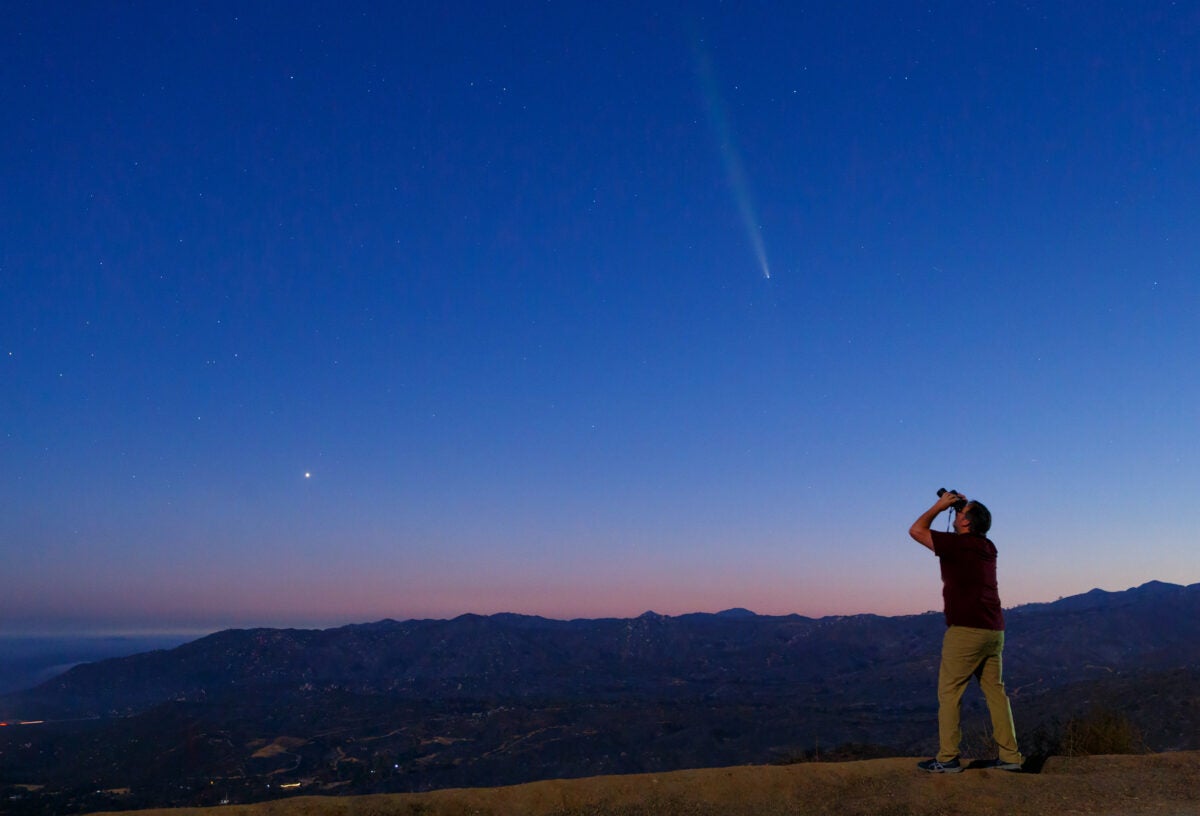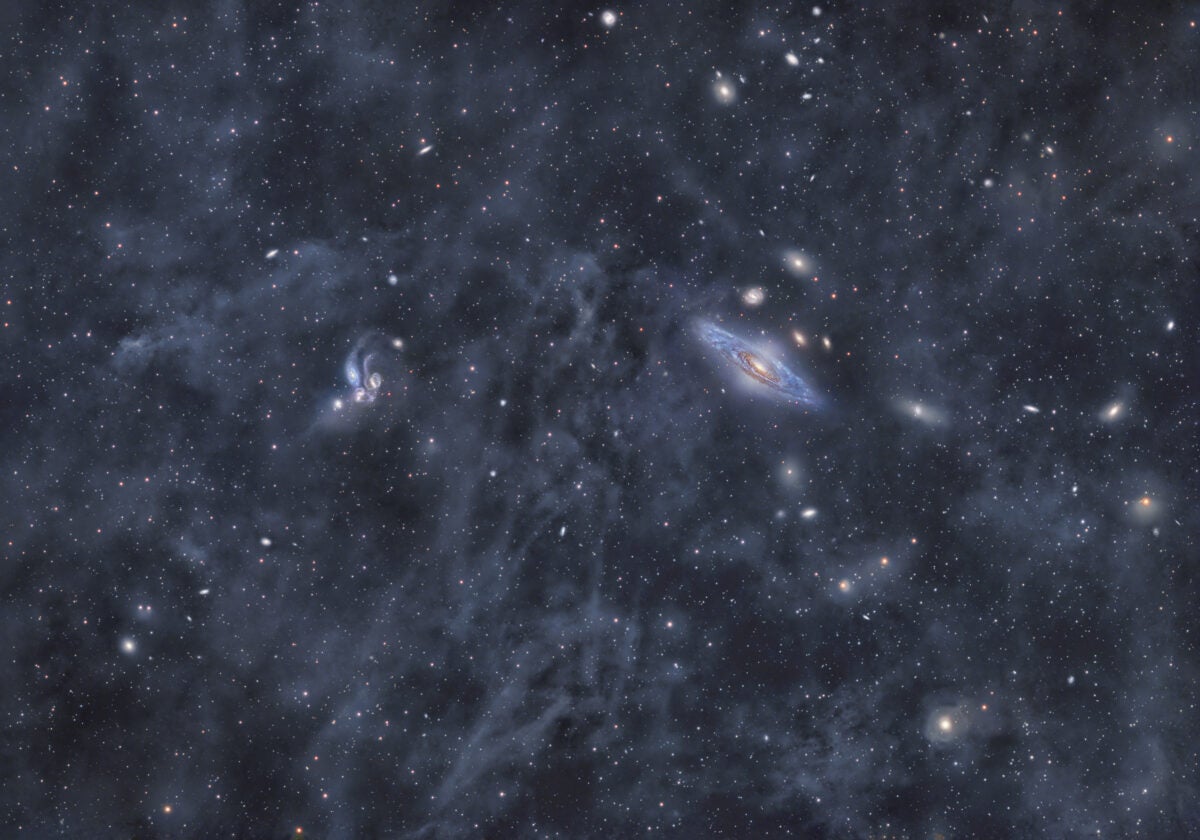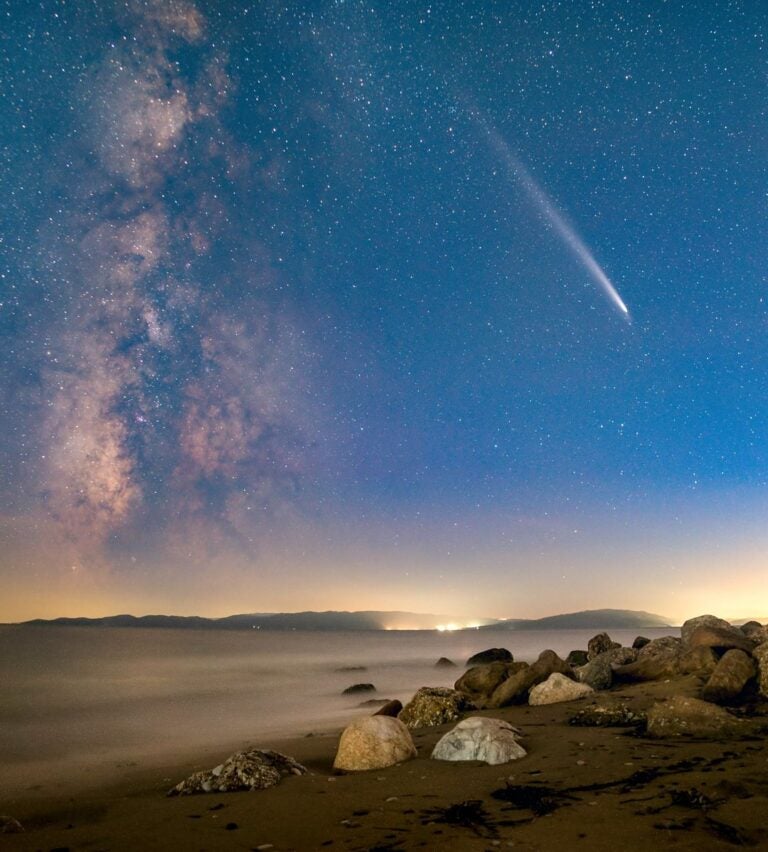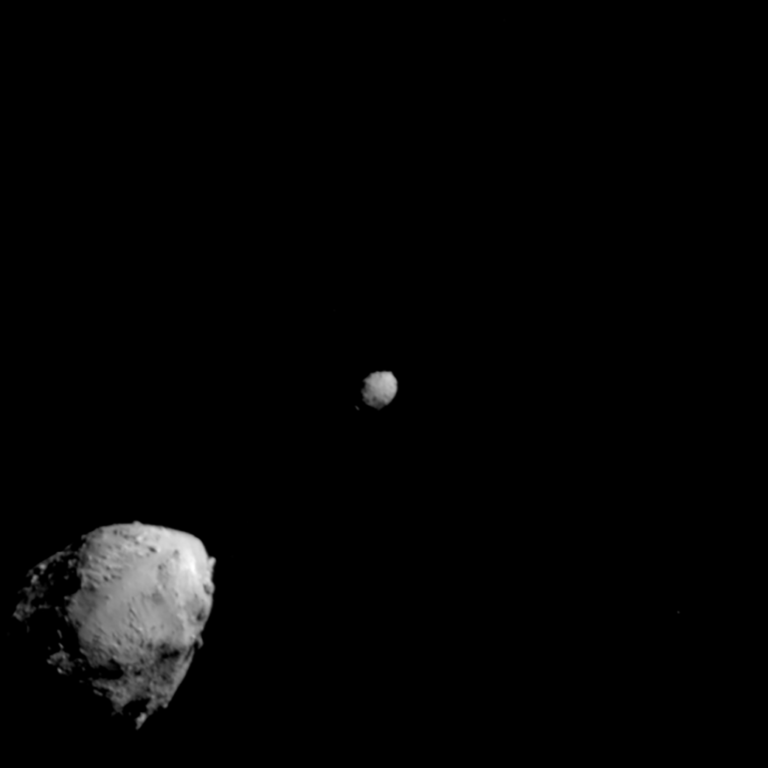
Stellar Stories
A bright comet fades
The brightest comet of recent times, C/2023 A3 Tsuchinshan-ATLAS, continues to be an impressive object in our skies but has faded as it moves away from both Earth and the Sun. The comet remains a naked-eye object, at about magnitude 5.2, but is now about 113 million kilometers (70 million miles) from Earth, moving slowly across the constellation Ophiuchus in the evening sky.
If you can get to a dark sky site with a clear horizon to the west, you can see the comet well in the evening sky as twilight darkens to night. The comet lies above and slightly right of the dazzling planet Venus, and you can see helpful finder charts on Astronomy.com. The comet’s tail has shrunk as it recedes from the Sun, and now stretches about 2° long, some four times the diameter of the Moon.
Crew-8 returns to Earth after a long stay in space
On October 25, NASA’s SpaceX Crew-8 astronauts returned to Earth in the early morning hours as they splashed down off the coast of Pensacola, Florida. This followed a nearly eight-month science mission and NASA’s eighth commercial crew rotation on a trip to the International Space Station. The returnees consisted of NASA astronauts Matthew Dominick, Michael Barratt, and Jeanette Epps, and were accompanied on return by Roscosmos cosmonaut Alexander Grebenkin, following 232 days aboard the ISS.
During this mission the astronauts traveled an astonishing 100 million miles during their 3,760 orbits about Earth. Their research touched areas such as studies that will aid human exploration beyond low-Earth orbit, examining zero-G stem cells, exploring how fuel temperatures affect flammability, and investigating how sustained spaceflight affects the immune function in astronauts’ bodies.
Astronomers study an extraordinary “dandelion supernova”
Stars die in a variety of ways, but generally speaking, really massive stars end their normal lives as supernovae, violent explosions. They leave what astronomers term supernova remnants, glowing clouds of debris that slowly scatter material back into the interstellar medium to be recycled again into new stars. On August 6, 1181, observers in China and Japan noted a “guest star” that was the brilliant, temporary death of a massive star in the constellation Cassiopeia and the birth of its remnant, Pa 30. The faint remnant of this blast, remarkably, was discovered by an amateur astronomer, Dana Patchick, in 2013.
Now astronomers at the Keck Observatory in Hawaii are making strides in understanding this strange artifact of a star that exploded more than 800 years ago. Last year they found unusual luminous filaments that resemble the tendrils of a dandelion’s flower. Using an instrument called the Keck Cosmic Web Imager at the Hawaiian observatory, astronomers have produced a computer-generated image of the remnant, which resembles an eruptive fireworks display. You can see the animation of the 1181 supernova remnant’s expansion below:
Our Sky This Week
Look to the east. If you do so on these late evenings, as we approach midnight local time, you’ll see the unmistakable figure of the constellation Orion rising. The brightest star in Orion is Rigel, marking the hunter’s left foot, but almost as bright as Rigel is the right shoulder star of Orion, Betelgeuse. This luminous star attracts a great deal of attention, aside from its exposure from a certain pair of ghostly films. Betelgeuse is a red supergiant, a very massive star that will end its days in a supernova explosion. In 2019 and 2020 the star faded, leading those with short fuses to suggest its normal days may be ending and a tremendous explosive death for Betelgeuse not far away. But the culprit turned out to be a cooling of part of the star’s photosphere and associated dust.
Now a team of astronomers led by Jared Goldberg of the Flatiron Institute in New York is suggesting that Betelgeuse may have a faint companion, making it a double star. They suggest the star, which they nicknamed “Betelbuddy,” acts like a snowplow, pushing dust out of the way and making Betelgeuse appear to be periodically brighter. Betelgeuse has been an extraordinarily interesting star for hundreds of years. Now maybe it is even more interesting. As you gaze up at Betelgeuse, consider the possibilities.
Word of the Day
Integrated Flux Nebula. This is a mouthful, and a relatively recent term, but it represents an exciting new vista for astronomy enthusiasts. Coined by astronomy enthusiast Steve Mandel, this term refers to extraordinarily faint nebulosity in the cosmos that lies outside our Milky Way Galaxy. The term nebula simply refers to glowing gas clouds, and practically all nebulae we see are in our own Milky Way Galaxy. (Some nebulae are visible in other galaxies, but they are very remote, tiny, and faint.)
With astroimagers pushing the limits of their capabilities in recent times, those at the cutting edge began to record extremely faint, swirling clouds of nebulosity in many fields of view. These integrated flux nebulae represent the light from faintly glowing gas in intergalactic space. I attach an amazing example of this, shot by the famous astroimager Tony Hallas, that shows a wispy field of this nebulosity in Pegasus, in the wide field that contains the galaxy NGC 7331 and the galaxy group called Stephan’s Quintet.

The Observatory
The constellation Hercules is still well-positioned in the western evening sky, although it is slowly inching closer to the Sun as the year wanes. The most famous deep-sky object in Hercules is the poster child, at least for Northern Hemisphere observers, of a beautiful type of object you can spy with a small telescope.
The Hercules Cluster, catalogued as M13 in Charles Messier’s famous list of objects, is one of the sky’s most famous globular star clusters. Named for their globe-like shapes, these objects are very different than open star clusters that lie scattered along the plane of our galaxy. Open clusters consist of young stars, but globular clusters are composed of hundreds of thousands of ancient stars, older than the disk of the Milky Way, that came together and ignited in the early days of the universe. They accreted too far from the Milky Way’s disk to be incorporated within it.
You can observe a cluster like M13 in Hercules on any clear, dark night, and will get the best views with a 4-inch or larger scope. A good 8-inch telescope on a moonless night will resolve some of the cluster’s brightest stars from afar.
This Week in Astronomy
Each week I produce a video highlighting some of the best observing events going on in our sky, and offering up targets for your binoculars and telescopes. These are created with the support of Celestron, the world’s leading manufacturer of telescopes. You can see the full listing of these videos, and watch them, either by following Astronomy’s social media feeds, or a quantitative listing here.
More from the Latest Issue
The November issue of Astronomy features a comprehensive, state-of-the-art report on the Sun. Our own star is going through an active period these days and of course is the nuclear engine that is responsible for our ability to be alive. Pick up a copy of Astronomy on your newsstand today and visit Astronomy.com to see everything the brand offers.


